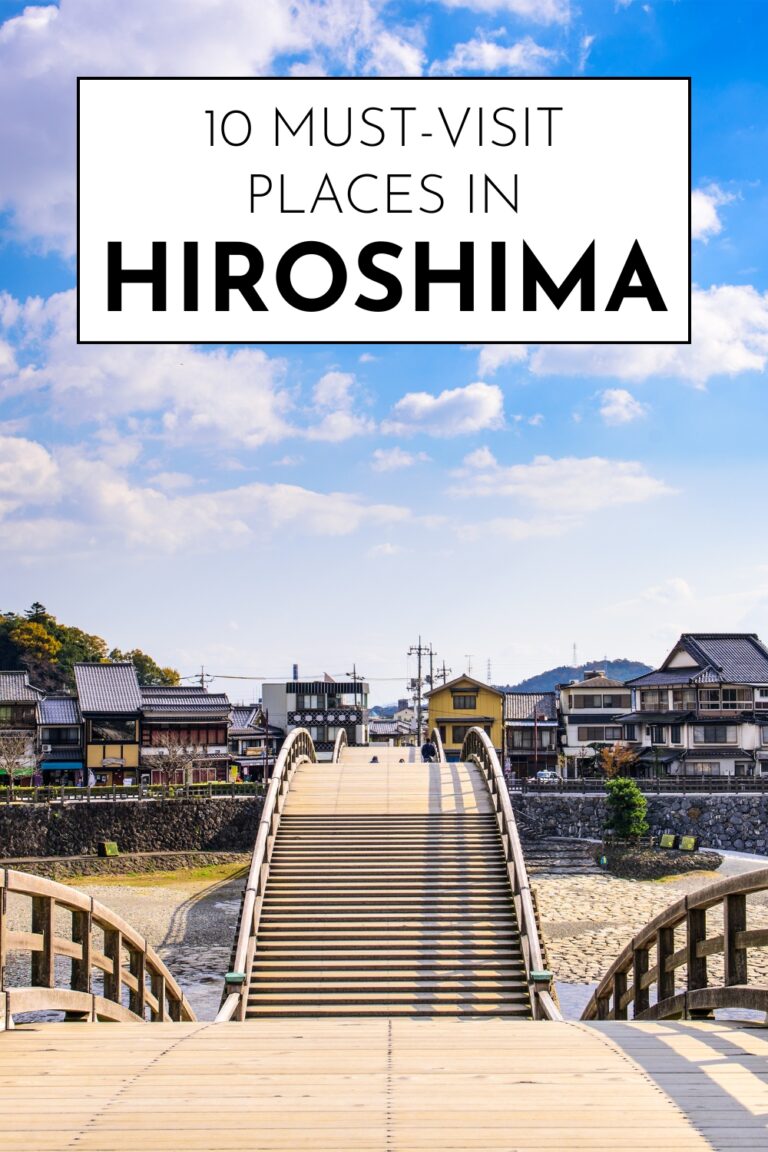Hiroshima, a city that has risen from the ashes to become one of Japan’s most moving and beautiful destinations, offers visitors a profound journey through history, culture, and natural beauty. Located on Japan’s main island of Honshu, this resilient city seamlessly blends its significant historical legacy with modern Japanese life, creating an unforgettable experience for every traveler.
Known worldwide for its pivotal role in World War II history, Hiroshima has transformed into a symbol of peace and renewal. The city now stands as a testament to human resilience, featuring stunning architecture, peaceful parks, sacred islands, and some of Japan’s most delicious cuisine. Beyond its historical significance, Hiroshima serves as the gateway to the scenic Seto Inland Sea and offers easy access to one of Japan’s most photographed landmarks.
From memorial parks that honor the past to ancient shrines floating on water, from bustling shopping districts to serene gardens, Hiroshima presents a perfect balance of reflection and celebration. The city’s warm hospitality, excellent transportation links, and diverse attractions make it an essential stop on any Japanese adventure.
Let’s explore the ten most remarkable destinations that showcase why Hiroshima deserves a place on every traveler’s itinerary.
1. Hiroshima Peace Memorial Park – A Place of Reflection

The Hiroshima Peace Memorial Park stands as the city’s most important and moving destination, dedicated to commemorating the victims of the atomic bombing and promoting world peace. This expansive park, located at the epicenter of the 1945 atomic explosion, transforms a site of tragedy into a place of hope and remembrance.
Historical Significance and Memorial Sites
The park encompasses multiple memorial structures, each telling part of the story of that fateful day in August 1945. The Peace Memorial Museum houses artifacts, photographs, and personal accounts that provide a comprehensive understanding of the atomic bombing’s impact on the city and its people.
The Atomic Bomb Dome, a UNESCO World Heritage Site, serves as the park’s most iconic symbol. This building, one of the few structures that remained standing near the blast’s epicenter, has been preserved exactly as it appeared after the bombing. Its skeletal dome and crumbling walls create a powerful reminder of the destructive force unleashed on the city.
Monuments and Peaceful Spaces
The Children’s Peace Monument, inspired by Sadako Sasaki’s story of folding paper cranes while battling leukemia, draws visitors from around the world. Thousands of colorful paper cranes from international schools and organizations create a moving display of hope and solidarity.
The Cenotaph for A-bomb Victims contains the names of all known victims and frames a perfect view of the Peace Flame and Atomic Bomb Dome. The Peace Flame has burned continuously since 1964 and will remain lit until all nuclear weapons are eliminated from the world.
Best time to visit: Early morning for peaceful reflection, avoid August 6th anniversary unless attending ceremonies
Key highlights: Peace Memorial Museum, Atomic Bomb Dome, Children’s Peace Monument
Entry fee: Museum 200 yen for adults, park free
Duration: 3-4 hours minimum
2. Miyajima Island – The Sacred Floating Shrine

Miyajima Island, officially known as Itsukushima, ranks among Japan’s three most scenic views and hosts one of the country’s most photographed landmarks. Located just 30 minutes from Hiroshima city, this sacred island offers a perfect blend of natural beauty, spiritual significance, and traditional Japanese culture.
The Famous Floating Torii Gate
The island’s most famous attraction is the massive vermillion torii gate of Itsukushima Shrine, which appears to float on water during high tide. This iconic 16-meter-tall gate, made from camphor wood, has welcomed visitors and pilgrims for over 1,400 years.
At low tide, visitors can walk out to the gate and explore the area around its base. High tide transforms the shrine into a magical floating temple, creating perfect reflection photos and an otherworldly atmosphere. The changing tides offer completely different experiences throughout the day.
Traditional Architecture and Cultural Experiences
Itsukushima Shrine itself showcases classic Japanese architecture with its wooden walkways extending over the water. The shrine’s unique design allows it to appear as if it’s floating during high tide, creating one of Japan’s most spiritual and visually stunning religious sites.
The island’s traditional shopping street, Omotesando, leads from the ferry terminal to the shrine. Here, visitors can sample local specialties like momiji manju (maple leaf-shaped cakes) and fresh oysters, while browsing traditional crafts and souvenirs.
Transportation: 30-minute ferry ride from Hiroshima
Best photo times: Sunrise, sunset, and high tide
Local specialties: Momiji manju, fresh oysters
Sacred note: Entire island considered holy in Shinto tradition
3. Hiroshima Castle – Reconstructed Feudal Fortress
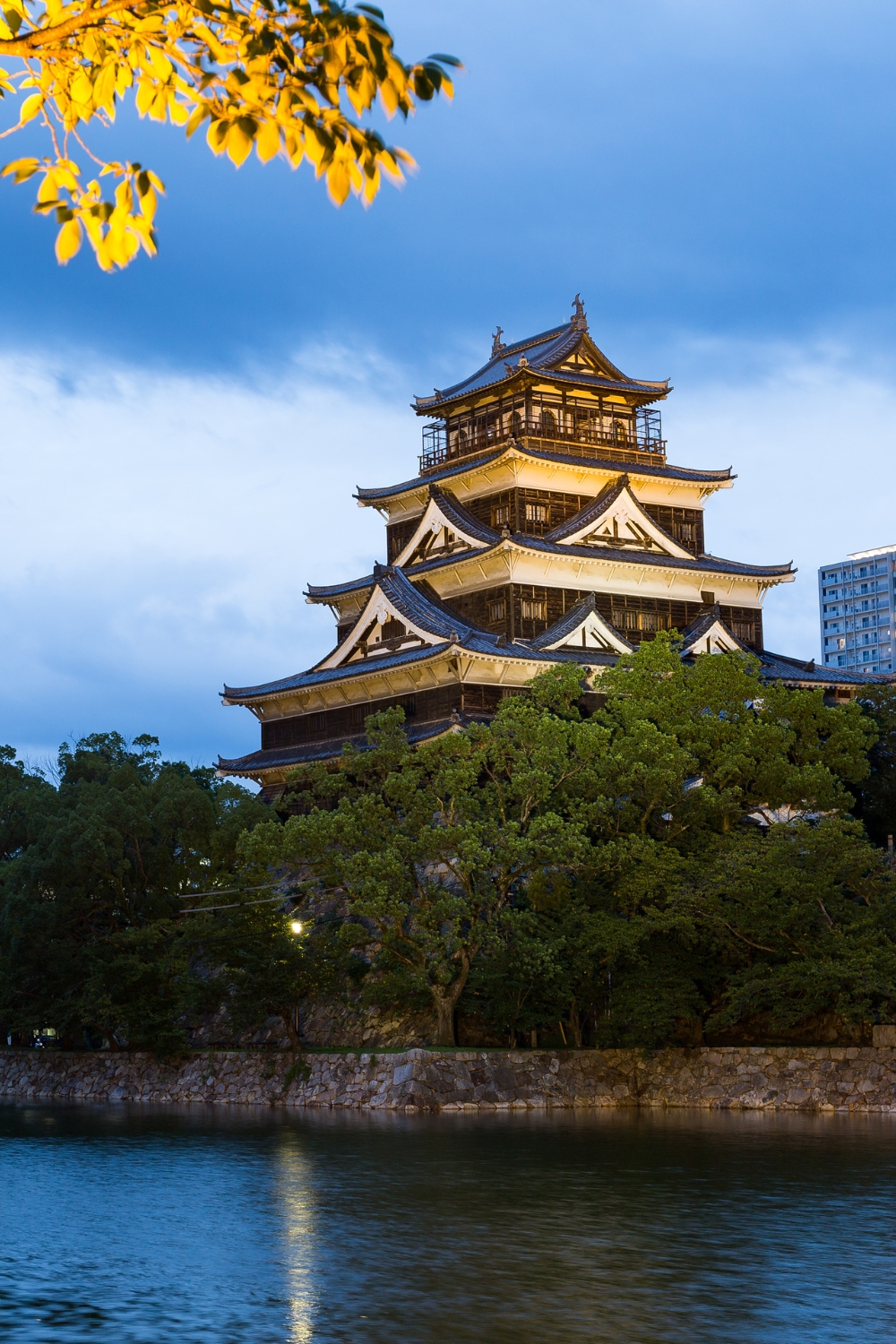
Hiroshima Castle, known locally as “Carp Castle,” offers visitors a glimpse into Japan’s feudal past and the region’s pre-war history. Originally built in 1589, the castle was completely destroyed in the atomic bombing but has been faithfully reconstructed to showcase traditional Japanese architecture and local history.
Historical Legacy and Reconstruction
The original castle served as the seat of the Hiroshima domain for nearly 270 years during the Edo period. Built by the powerful daimyo Mori Terumoto, the castle played a crucial role in the region’s political and cultural development.
The current five-story reconstruction, completed in 1958, houses a comprehensive museum that tells the story of Hiroshima’s history from ancient times through the feudal period. Interactive exhibits and artifacts help visitors understand life in medieval Japan and the castle’s role in regional politics.
Museum Exhibits and Castle Grounds
The castle museum displays samurai armor, weapons, and artifacts from the Edo period. The top floor offers panoramic views of modern Hiroshima, providing a stark contrast between historical and contemporary Japan.
The castle grounds feature beautiful gardens that showcase different seasonal displays. Spring brings cherry blossoms, while autumn colors create spectacular photo opportunities. The moat and stone foundations give visitors a sense of the castle’s original defensive capabilities.
Built: Originally 1589, reconstructed 1958
Museum hours: 9:00 AM – 6:00 PM (March-November)
Entry fee: 370 yen for adults
Best season: Spring for cherry blossoms, autumn for fall colors
4. Shukkeien Garden – Traditional Japanese Landscaping
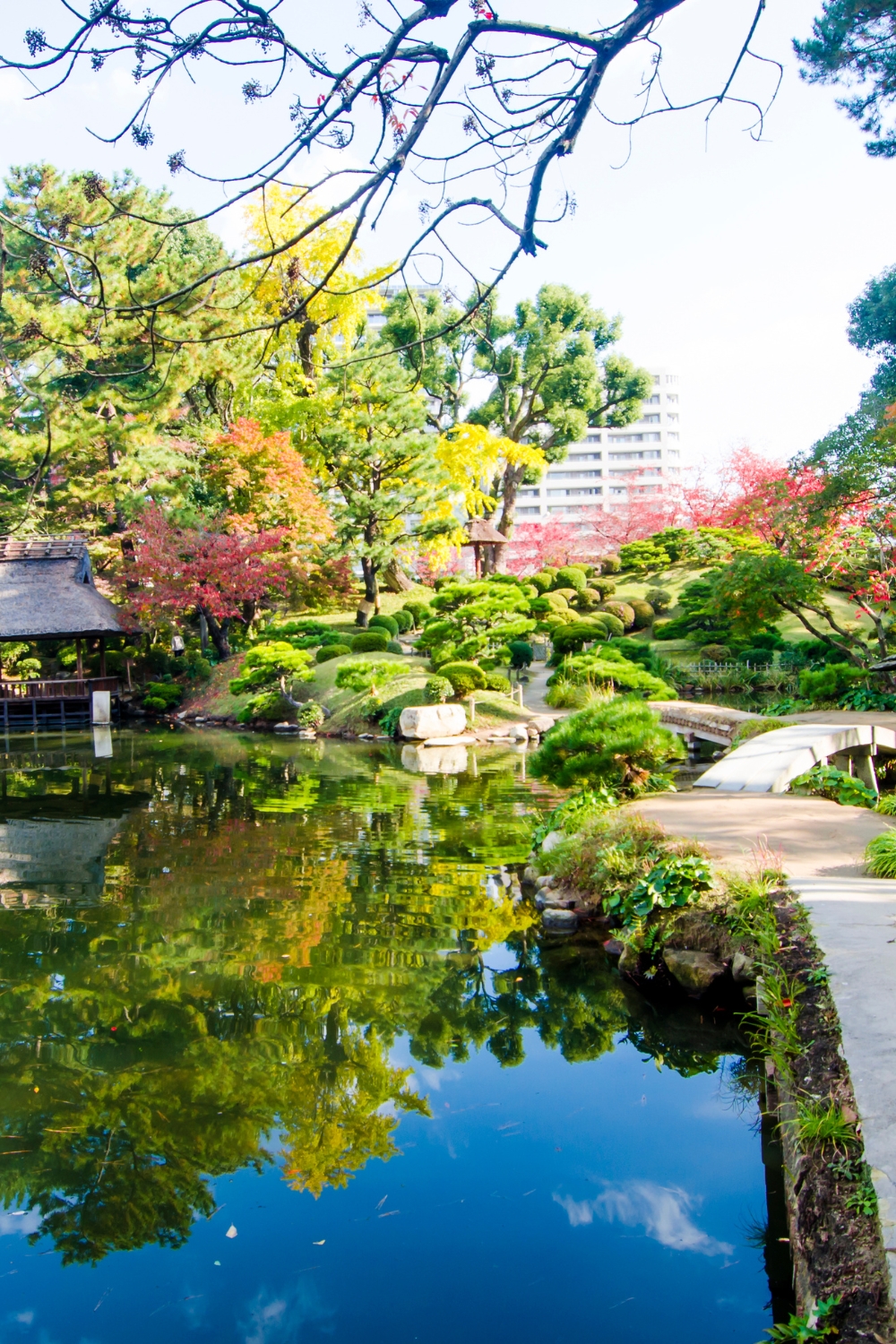
Shukkeien Garden represents one of Japan’s finest examples of traditional landscape design, creating a miniature world of mountains, valleys, and forests within a compact urban space. This historic garden, whose name means “shrunken-scenery garden,” offers visitors a peaceful retreat from city life and a masterclass in Japanese aesthetic principles.
Garden Design and Philosophy
Created in 1620, the garden employs traditional Japanese landscaping techniques to recreate famous scenic spots from throughout Japan and China in miniature form. Winding paths lead visitors through carefully composed scenes that change with every step and season.
The central pond, crossed by elegant bridges, serves as the garden’s focal point. Stone lanterns, carefully placed rocks, and pruned trees create perfect viewing spots from every angle. The garden’s design encourages slow, contemplative walking while discovering new perspectives and hidden details.
Seasonal Beauty and Tea Houses
Each season transforms Shukkeien into a different work of art. Spring cherry blossoms reflect in the pond’s still water, summer brings lush greenery and blooming flowers, autumn creates fiery maple displays, and winter snow adds serene beauty to the landscape.
Traditional tea houses within the garden offer visitors the chance to experience Japanese tea ceremony while enjoying views of the meticulously maintained landscape. The contrast between the garden’s timeless beauty and the modern city visible beyond its borders creates a uniquely Japanese experience.
Created: 1620
Entry fee: 260 yen for adults
Best times: Early morning for peaceful atmosphere, different seasons for varied beauty
Activities: Walking meditation, photography, tea ceremony
5. Mazda Museum – Automotive Innovation
The Mazda Museum showcases the evolution of one of Japan’s most innovative automotive companies, offering visitors an inside look at car manufacturing and the brand’s unique rotary engine technology. Located at Mazda’s Hiroshima headquarters, this museum celebrates both automotive history and cutting-edge manufacturing.
Company History and Innovation
Founded in Hiroshima in 1920, Mazda has grown from a small cork manufacturer to a global automotive innovator. The museum traces this remarkable journey through displays of vintage vehicles, prototype cars, and technological breakthroughs that have defined the company’s identity.
The museum’s highlight is its comprehensive collection of rotary engine vehicles, including the famous RX-7 and RX-8 sports cars. Interactive displays explain how rotary engines work and why Mazda became the only manufacturer to successfully mass-produce these unique powerplants.
Manufacturing Tours and Modern Technology
Guided factory tours take visitors through active production lines where they can observe modern automotive manufacturing processes. The tours demonstrate Japanese manufacturing efficiency and quality control methods that have made Japanese cars renowned worldwide.
The museum also features concept cars and future technology displays that showcase Mazda’s vision for sustainable transportation. Electric and hybrid vehicle exhibits highlight the company’s commitment to environmental responsibility and innovation.
Tour duration: 90 minutes including factory visit
Reservation: Required in advance
Languages: Japanese and English tours available
Age restrictions: Elementary school age and above
6. Okonomiyaki Village – Culinary Adventure
Okonomiyaki Village represents Hiroshima’s most famous culinary destination, housing dozens of restaurants specializing in the city’s signature dish. This multi-story complex dedicates three floors to perfecting Hiroshima-style okonomiyaki, offering visitors the chance to experience authentic local cuisine in its birthplace.
Hiroshima-Style Okonomiyaki Tradition
Hiroshima-style okonomiyaki differs significantly from the Osaka version, featuring distinct layers rather than mixed ingredients. The base consists of a thin crepe-like batter, topped with cabbage, bean sprouts, pork, and yakisoba noodles, all finished with a fried egg and special sauce.
Local chefs spend years perfecting their technique on the large, flat griddles called teppan. Watching skilled cooks prepare okonomiyaki becomes part of the dining experience, as they expertly flip and layer ingredients with precision and flair.
Restaurant Variety and Atmosphere
The village houses over 20 different okonomiyaki restaurants, each with its own secret sauce recipe and preparation style. Some establishments have been family-run for generations, while others represent modern interpretations of the classic dish.
The narrow corridors and small restaurants create an intimate, local atmosphere that makes visitors feel like they’ve discovered a hidden culinary secret. Most restaurants seat only 8-12 people, encouraging interaction with both chefs and fellow diners.
Location: Three floors of okonomiyaki restaurants
Operating hours: Most shops open 11:00 AM – 2:00 AM
Price range: 800-1,200 yen per serving
Best experience: Sit at the counter and watch preparation
7. Hiroshima Museum of Art – Cultural Treasures
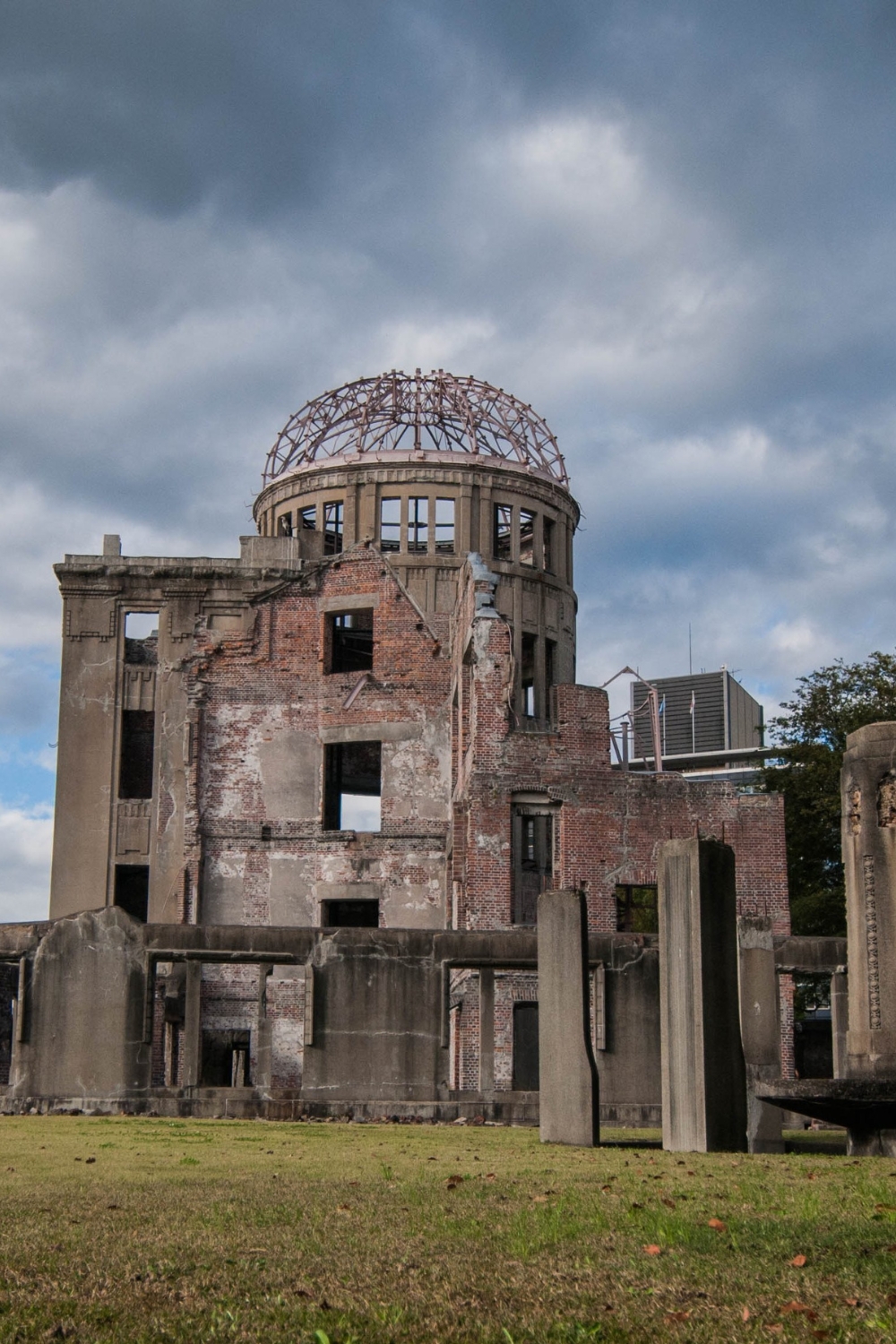
The Hiroshima Museum of Art houses an impressive collection of both European and Japanese artwork, providing visitors with a comprehensive cultural experience in the heart of the city. This museum, established in 1978, focuses on French Impressionist and Post-Impressionist works alongside significant Japanese pieces.
European Masterpieces and Japanese Art
The museum’s European collection includes works by Monet, Renoir, Picasso, and Van Gogh, representing some of the finest Impressionist and Post-Impressionist art in Japan. These masterpieces provide insight into the artistic movements that influenced modern Japanese art.
The Japanese collection showcases both traditional and contemporary works, including paintings, sculptures, and decorative arts. Special exhibitions regularly feature renowned Japanese artists and explore themes connecting Eastern and Western artistic traditions.
Architecture and Garden Setting
The museum building itself represents modern Japanese architecture, with clean lines and natural materials that create a serene environment for viewing art. Large windows provide natural light for the galleries while offering views of the surrounding landscape.
The museum sits within Hiroshima Central Park, allowing visitors to combine art appreciation with outdoor relaxation. The park’s walking paths and green spaces provide a perfect complement to the indoor cultural experience.
Collection highlights: French Impressionists, Japanese contemporary art
Entry fee: 1,300 yen for adults
Special exhibitions: Regular rotating displays
Museum cafe: Overlooks park with seasonal menu
8. Hiroshima Toshogu Shrine – Spiritual Heritage
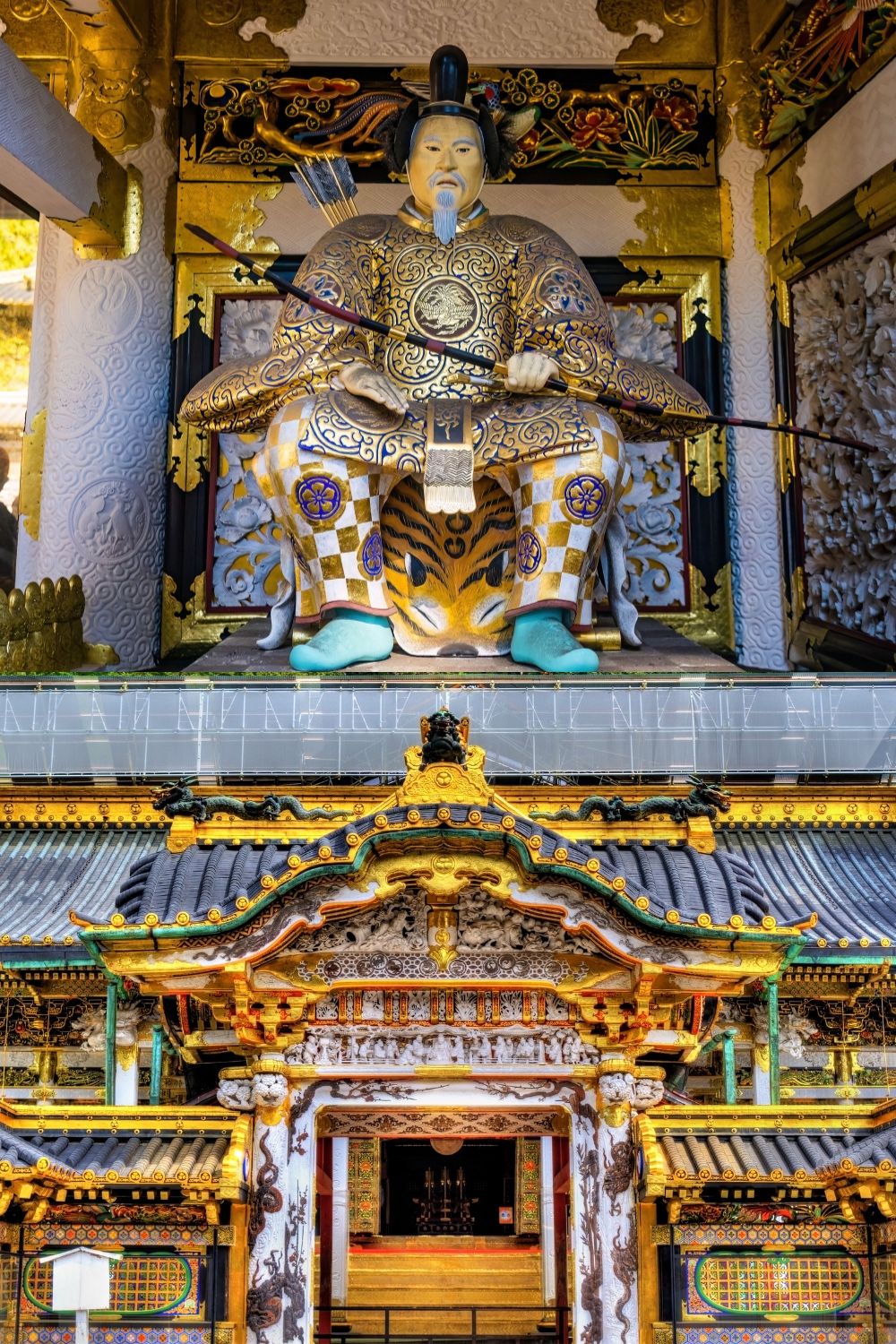
Hiroshima Toshogu Shrine represents one of Japan’s most beautiful examples of Edo-period shrine architecture, dedicated to Tokugawa Ieyasu, the founder of the Tokugawa shogunate. This colorful and ornate shrine offers visitors a different spiritual experience from the more famous Itsukushima Shrine.
Architectural Splendor and Historical Significance
Built in 1648, the shrine showcases the elaborate decorative style typical of Toshogu shrines throughout Japan. Intricate wood carvings, gold leaf details, and vibrant colors create a visual feast that demonstrates the artistic capabilities of Edo-period craftsmen.
The shrine’s main hall features detailed carvings of dragons, phoenixes, and other mythical creatures, each with symbolic meaning in Japanese culture. The use of bright colors and ornate decoration reflects the power and wealth of the Tokugawa family during Japan’s feudal period.
Festivals and Cultural Events
The shrine hosts several annual festivals that showcase traditional Japanese performing arts, including traditional music, dance, and ceremonial processions. These events provide visitors with authentic cultural experiences and insights into Japanese spiritual traditions.
The peaceful shrine grounds offer a quiet retreat from the city’s bustling streets. Ancient trees provide shade and create a natural sanctuary where visitors can experience the spiritual atmosphere that has drawn worshippers for centuries.
Built: 1648
Architectural style: Elaborate Edo-period shrine architecture
Best visit times: Early morning for peaceful atmosphere
Cultural events: Spring and autumn festivals
9. Hiroshima Prefectural Art Museum – Modern Cultural Hub
The Hiroshima Prefectural Art Museum focuses on contemporary art and regional artistic traditions, offering visitors insight into modern Japanese creativity and local cultural identity. This museum, located near Shukkeien Garden, provides a contemporary counterpoint to the city’s historical attractions.
Contemporary Art and Regional Focus
The museum specializes in contemporary Japanese art, with particular emphasis on artists from the Hiroshima region. This focus creates a unique perspective on how local artists have interpreted and contributed to modern Japanese art movements.
Special exhibitions regularly feature international contemporary artists, creating dialogue between Japanese and global artistic expressions. These rotating displays ensure that repeat visitors always discover something new and engaging.
Educational Programs and Community Connection
The museum offers extensive educational programs, including art workshops, lectures, and school visits that connect the local community with contemporary art. These programs make art accessible to people of all ages and backgrounds.
The museum’s location next to Shukkeien Garden allows visitors to combine traditional Japanese aesthetics with contemporary artistic expression in a single cultural excursion. The contrast between ancient garden design and modern art creates a uniquely enriching experience.
Focus: Contemporary Japanese art, regional artists
Location: Adjacent to Shukkeien Garden
Educational programs: Workshops and lectures available
Combined tickets: Available with Shukkeien Garden
10. Hiroshima Station and Surrounding District – Modern Gateway
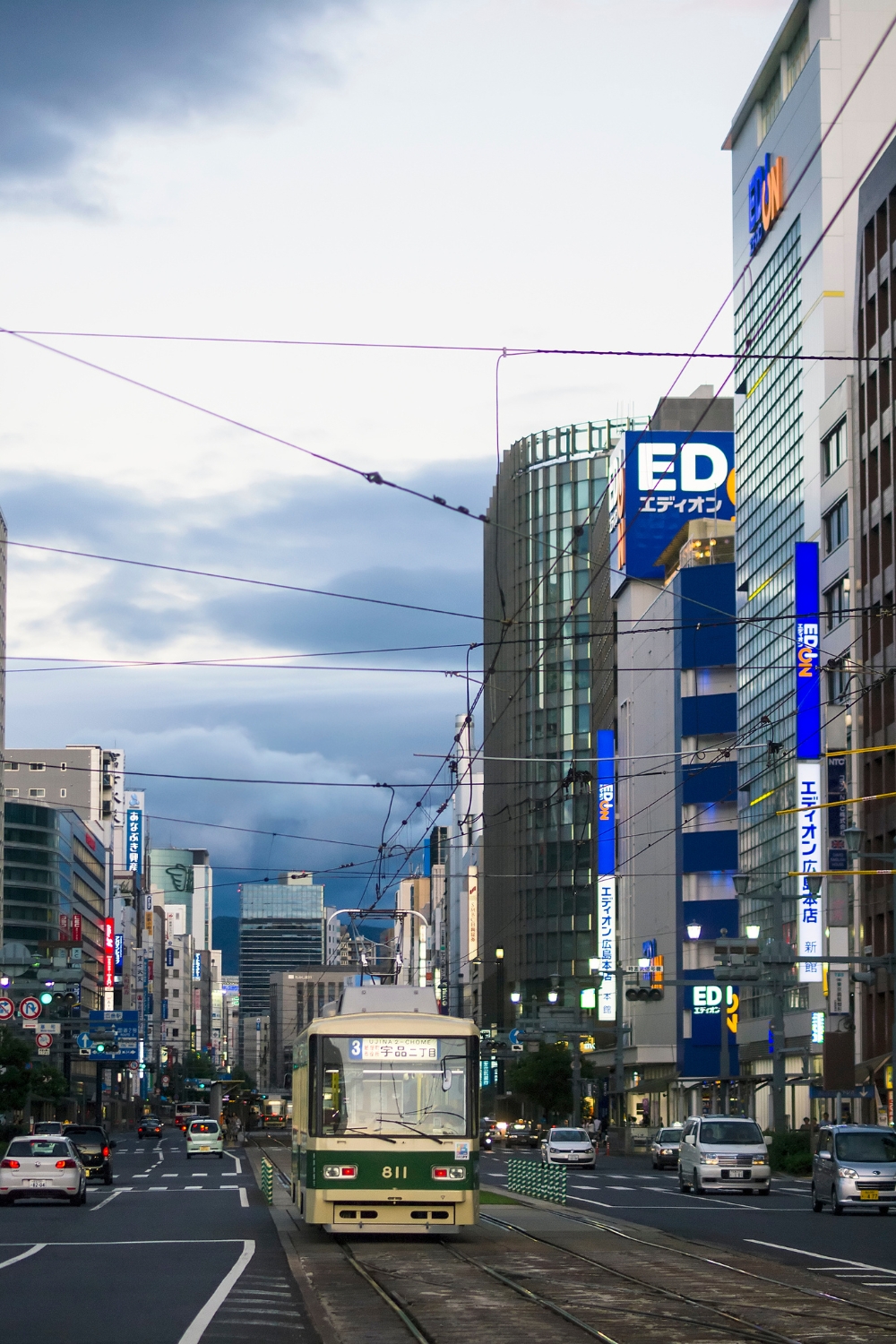
Hiroshima Station serves as more than just a transportation hub; it represents the modern face of Hiroshima with its shopping centers, restaurants, and entertainment facilities. This bustling district provides visitors with contemporary Japanese urban culture and convenient access to the city’s attractions.
Transportation Hub and Convenience
As the terminus for the shinkansen (bullet train) from Tokyo and Osaka, Hiroshima Station connects the city to Japan’s major metropolitan areas. The station’s modern facilities include tourist information centers, luggage storage, and ticket offices that make travel planning convenient for visitors.
The station building houses multiple floors of shops, restaurants, and services that cater to both travelers and locals. This vertical shopping complex showcases modern Japanese retail culture and provides everything visitors need for comfortable travel.
Shopping and Dining Experiences
The station area features department stores, electronics shops, and souvenir stores that offer both local Hiroshima specialties and general Japanese products. The basement food courts provide access to regional cuisine and convenient meal options for travelers.
Hotels surrounding the station offer convenient accommodations for visitors who want easy access to transportation while exploring Hiroshima. The area’s restaurants range from quick casual options to upscale dining establishments serving both local and international cuisine.
Transportation: Shinkansen terminus, local trains, buses, trams
Shopping: Multiple department stores and specialty shops
Dining: Food courts, restaurants, local specialties
Hotels: Convenient accommodations for all budgets
Planning Your Hiroshima Experience
Getting Around the City
Hiroshima’s compact size and excellent public transportation make it easy to visit multiple attractions in a single day. The city’s streetcar system connects major attractions, while the JR Pass covers transportation to Miyajima Island and other regional destinations.
Walking between attractions in the city center is pleasant and allows visitors to discover hidden temples, local restaurants, and neighborhood shops. Rental bicycles provide another convenient option for exploring the flat city streets and riverside paths.
Best Times to Visit Different Attractions
Spring (March-May): Perfect weather for all activities, with cherry blossoms at Hiroshima Castle and Shukkeien Garden. This popular season brings crowds but offers ideal conditions for outdoor exploration.
Summer (June-August): Hot and humid, but good for indoor attractions like museums and covered shopping areas. Early morning visits to outdoor sites are most comfortable.
Autumn (September-November): Excellent weather with beautiful fall colors in gardens and parks. This season offers comfortable temperatures and stunning seasonal displays.
Winter (December-February): Fewer crowds and clear mountain views, though some outdoor activities may be limited. Indoor attractions and hot local cuisine provide warmth and comfort.
Cultural Etiquette and Respectful Tourism
When visiting Peace Memorial Park, maintain quiet, respectful behavior and avoid inappropriate photos or loud conversations. Remember that this is a site of mourning and remembrance for many visitors.
At shrines and temples, follow proper etiquette: bow before entering, purify hands and mouth at washing stations, and avoid flash photography in sacred spaces. Most religious sites welcome respectful visitors and photography in designated areas.
Local Cuisine and Specialties
Beyond okonomiyaki, Hiroshima offers excellent local seafood, including fresh oysters from Hiroshima Bay. The region’s sake breweries produce distinctive local varieties that pair well with regional cuisine.
Local markets near the station and in shopping districts offer regional specialties like momiji manju from Miyajima and Hiroshima-style tsukemen (dipping noodles). These local foods provide authentic tastes of regional culture.
Conclusion
Hiroshima offers a profound and diverse travel experience that combines historical significance, cultural richness, and natural beauty in ways that few destinations can match. From the moving memorials of Peace Memorial Park to the floating torii gate of Miyajima, from reconstructed feudal castles to contemporary art museums, each attraction reveals different aspects of this remarkable city’s character.
The city’s greatest strength lies in its ability to honor its tragic past while embracing a hopeful future. Hiroshima demonstrates how communities can heal, rebuild, and thrive while never forgetting the lessons of history. This balance between remembrance and renewal creates a travel experience that is both emotionally moving and culturally enriching.
These ten must-visit places represent the essential Hiroshima experience, but the city offers much more to discover. Hidden temples, neighborhood festivals, local restaurants, and friendly residents create countless opportunities for deeper cultural connection and personal discovery.
Whether you visit for a day trip from Osaka or spend several days exploring the region, Hiroshima’s combination of historical importance, cultural attractions, and natural beauty ensures a memorable journey. The city’s message of peace, its resilient spirit, and its warm hospitality make it an essential destination for anyone seeking to understand modern Japan and its remarkable story of renewal.
Plan your visit to Hiroshima today and prepare to experience one of Japan’s most meaningful and beautiful destinations. This city of peace and renewal awaits with its temples, museums, gardens, and countless opportunities for reflection, learning, and inspiration.
